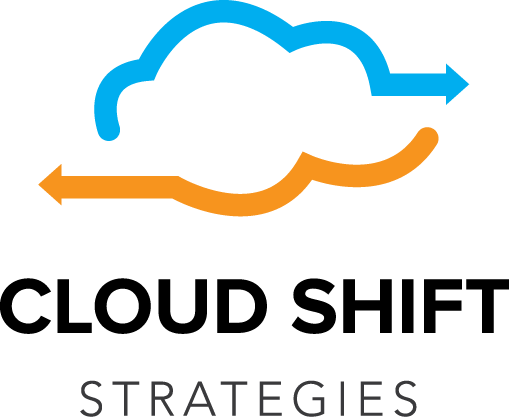Cloud Shift consistently engages with clients who simply want their backup and disaster recovery (DR) challenges to go away. Many of our clients find that as soon as they obtain a new backup or DR solution to solve their current challenges, it rarely lasts. Within a year, a few months, or even upon deployment, they realize it does not address all their challenges. To remedy this, many now turn to AWS S3 as a DR storage target to permanently address their backup and DR management concerns.
Backup and DR Still Top of Mind
Backup remains top of mind for many of our clients. These days, their challenges center less of successfully completing backups. Many of the products that Cloud Shift supports, such as Commvault, Rubrik, Veritas, and others, ensure they successfully complete their backups.
The challenges our clients face stem from managing the infrastructure on which their backups reside. Many use their own storage appliances to store this backup data on premises which are often replicated to an offsite DR location. This approach no longer works well. They must install these appliances, depreciate them, apply updates on them, upgrade them, refresh them, etc. In short, they know they need to store their backup data long term. They simply no longer see on-premises appliances as the preferred solution.
Cloud Shift’s 3-Step Approach to Cloud Backup
In working with multiple of our clients on this matter, they have seen how AWS S3 better addresses this challenge. We recommend our clients adopt the following 3-step approach to best use the AWS for their backup and DR strategy:
- Dedupe data at the source whenever possible. Deduplicating data on the server serves two purposes. It reduces the amount of data sent over the network and stored. Enterprise backup products such as Commvault, Veritas, and Rubrik perform this task.
- Store the data in the AWS cloud. While our clients may keep a recent backup copy or copies of data on-premises for fast restores, they keep all backup data in the cloud. This mitigates or even eliminates the need for them to have any appliances on-premises at all.
Some clients may use AWS File Gateway to store data locally. In the background, it migrates backup data copies to AWS S3. Other of our clients use the native integration with AWS S3 that these enterprise backup products offer. However, AWS S3’s unlimited storage capacity represents our client’s ultimate endgame. They no longer need to manage on-premises backup infrastructure. - Turn on S3’s Lifecycle policies. Once their backup data resides in AWS S3, we configure S3 to automatically tier their data to use the optimal storage tier. The most recently uploaded data resides on active storage that our clients can retrieve quickly, if needed. As the data ages, AWS S3’s Lifecycle Management policies automatically move data to lower cost tiers of storage in accordance with their data management policies. Our clients can even set policies in AWS S3 that automatically delete data to meet specific healthcare and statutory compliance requirements.
The Other Big Benefit: Our Clients Well Positioned for DR
Once they store their backup data in AWS, it well positions our clients to perform an offsite DR in AWS. Using its AWS Enterprise SureStart© program, Cloud Shift steps each of its clients through all the required considerations to perform a DR . It does so in a manner that they comply with the AWS Well Architected Framework.
By taking our clients through this program, we verify they have everything they need to perform a recovery. For example, in some cases, we identified that our clients needed to recover in a compliant AWS data center. In others, we use tools such as AWS CloudFormation and Hashicorp Terraform to create network and application templates to accelerate their recoveries if they needed to perform one.
Perhaps best of all, using these tools, our clients can test their DR plan at any time and verify it works. They can obtain the compute, network, and storage resources they need in the AWS cloud, run the test, and then shut it down. This eliminates the need for them to acquire any physical resources and they only pay for the resources they use during the time that they use them.
A Permanent Solution for Backup and DR Management
Many if not all our clients have permanently solved their problem of backing up their data. Now, thanks to AWS S3, they have also permanently addressed their backup and DR management challenges.
Using AWS in conjunction with Cloud Shift, our clients rarely need to worry about managing backup hardware or figure out how to perform a DR. Cloud Shift and AWS take care of these operational concerns for them. This frees them to focus on growing their business and meeting the demands of their customers, which we want to be the highest priority of all clients.
Connect With Us
Your privacy is very important to us. We'll never share your contact info with anyone.
6311 Ames Ave Unit #154 Omaha, NE 68104
1 (844) 306-2136
info@cloudshift.cc

